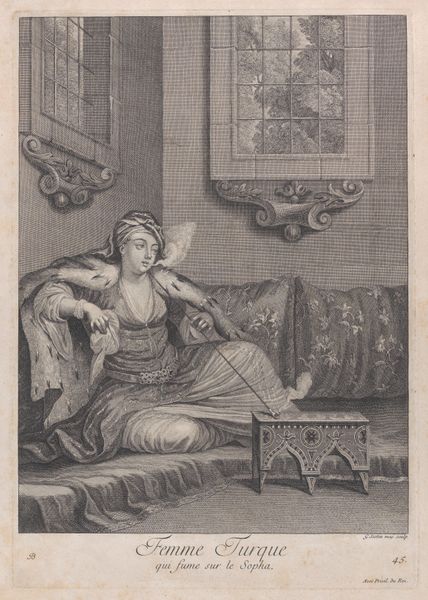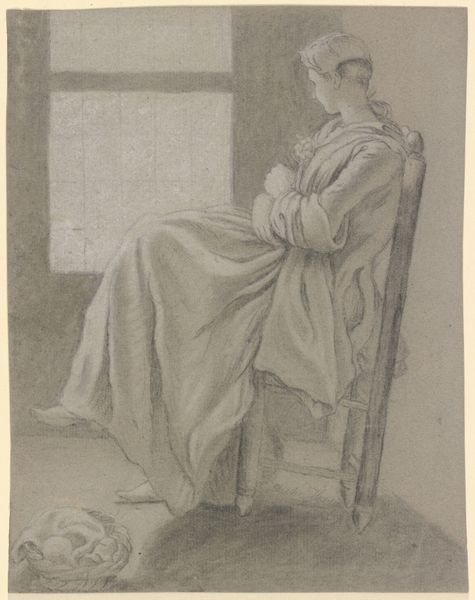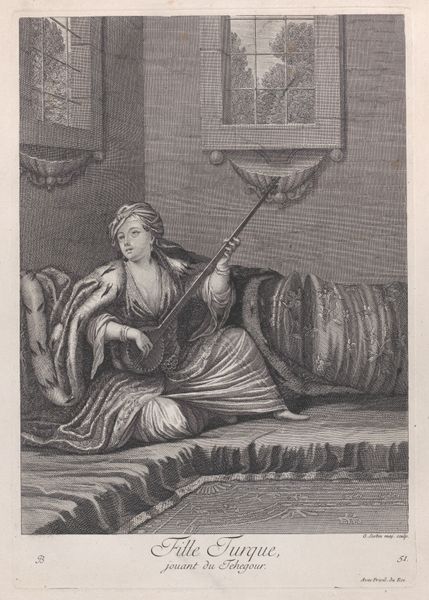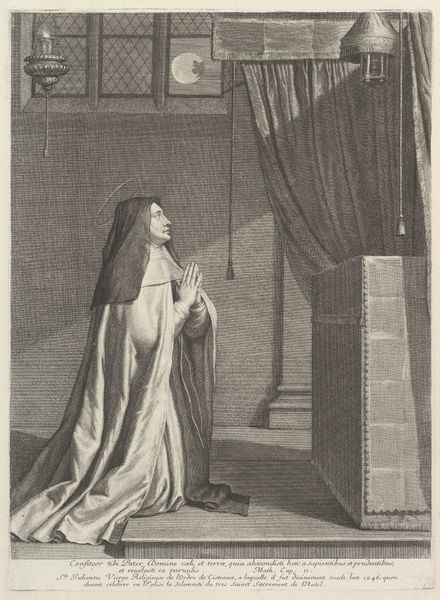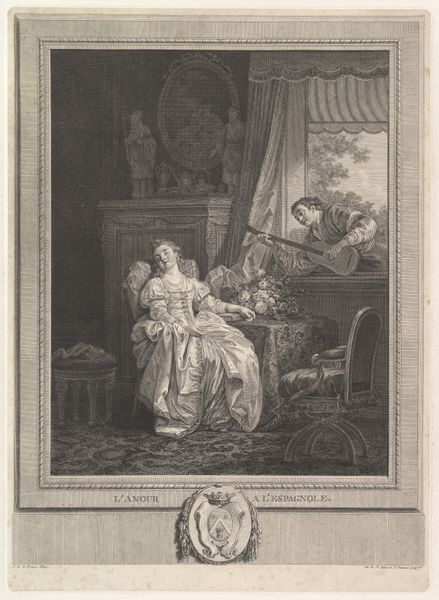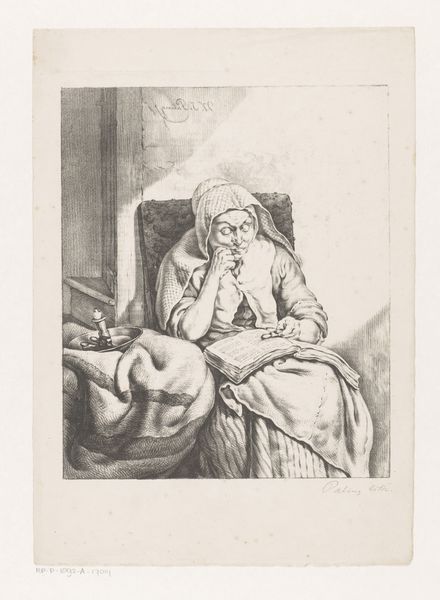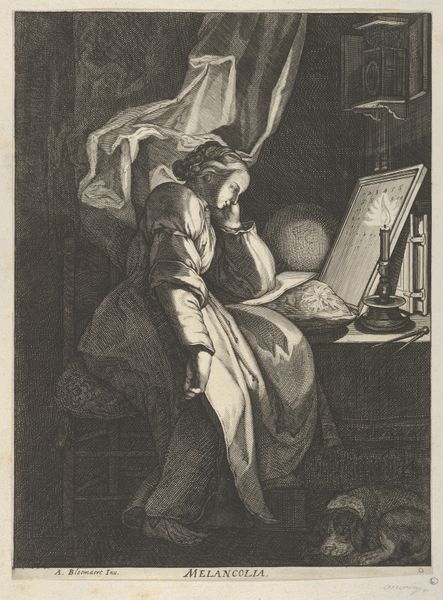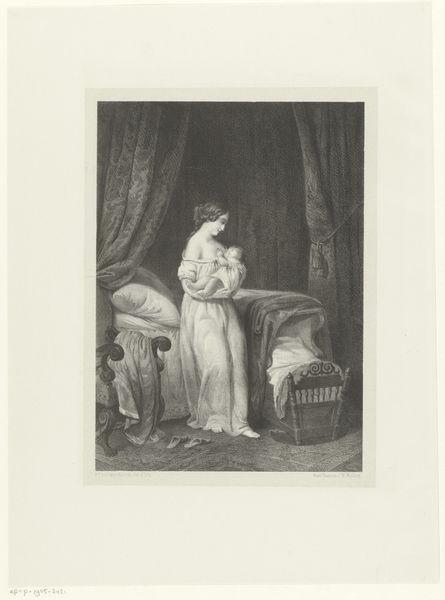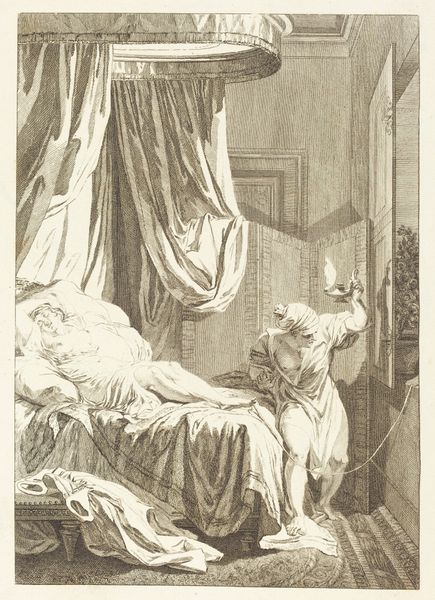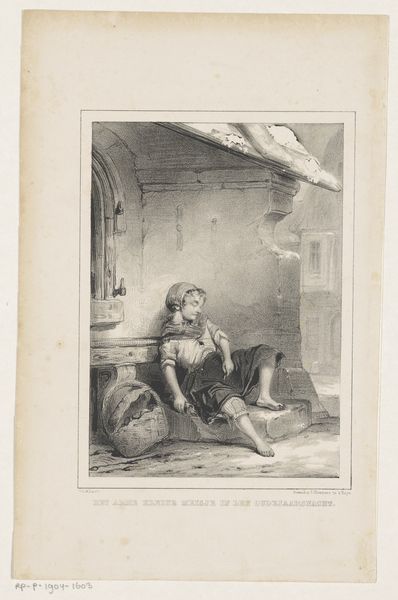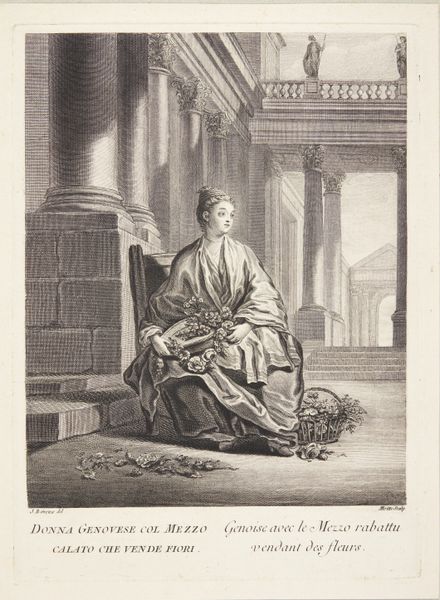
Femme Turque, qui repose sur le Sopha sortant du bain, plate 46 from "Recueil de cent estampes représentent differentes nations du Levant" 1714 - 1715
0:00
0:00
drawing, print, engraving
#
drawing
#
baroque
# print
#
figuration
#
orientalism
#
line
#
genre-painting
#
nude
#
engraving
Dimensions: Sheet: 16 7/16 × 12 3/16 in. (41.7 × 31 cm) Plate: 14 1/8 × 9 13/16 in. (35.8 × 24.9 cm)
Copyright: Public Domain
Curator: What an enigmatic piece! Here, we have "Femme Turque, qui repose sur le Sopha sortant du bain," or "Turkish Woman Resting on a Sofa after Bathing," an engraving by Jean Baptiste Vanmour, dating from around 1714-1715. Editor: It's dreamy, isn't it? All that line work creates this feeling of languid repose. It’s an intimate scene, yet somehow distant. Almost voyeuristic. Curator: Precisely. Vanmour was a painter in the court of the Ottoman Empire, and he became quite skilled at capturing these intimate moments of Ottoman life. This print is from a larger collection depicting various nations of the Levant. The engraving captures her stillness, a delicate balance between relaxation and awareness. Editor: It speaks to this very potent Orientalist fantasy. The exoticized "other" at their most vulnerable. Note the window framing a verdant landscape and another smaller barred window implying restriction, all of which acts to create this mood. What’s striking is how timeless she seems, but the composition roots it firmly in a specific era with it baroque detailing. Curator: Absolutely. The setting provides a layer of narrative depth. And the pose is itself very telling; relaxed, but maybe a little staged? Is she really resting or is she posing? She becomes a representation rather than an individual, filtered through a European gaze. It touches upon that complicated space between documentation and theatrical interpretation. Editor: And what’s her story, do you think? There's an aura about her, of something unsaid. It triggers the idea of confinement, maybe both physical and psychological. That's the power of symbols isn't it? Curator: Indeed. This piece functions as a kind of visual poem, prompting more questions than it answers. Perhaps that's the true art of it. Editor: I agree. It holds our gaze, prompting us to confront our own assumptions and projections onto the "other". Curator: Exactly, it transcends its historical context and opens dialogues with our contemporary selves. Editor: Yes. It resonates as an exploration of cultural encounter, the exchange between perception and reality, still alive within us, even now.
Comments
No comments
Be the first to comment and join the conversation on the ultimate creative platform.
